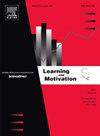Exploring age-related differences in virtual maze navigation: The impact of external cues on search-strategy
IF 1.7
4区 心理学
Q3 PSYCHOLOGY, BIOLOGICAL
引用次数: 0
Abstract
Visuospatial navigation problems represent a significant challenge to quality of life in older adults. We have previously shown that, in a virtual honeycomb-shaped maze (in which participants face numerous sequential Left/Right junctions; honeycomb free-movement pattern [FMP] Y-maze), younger individuals (18−40) typically adopt a strategy of alternating their turns at successive junctions, while those aged ≥ 70 show significantly fewer alternations, potentially due to diminished visuospatial working memory. However, reduced alternation could also reflect decreased exploratory drive in older adults, characterized by diminished intrinsic motivation to engage with novel environments. Here, we explored whether alternation patterns reflect working memory processes, hypothesizing that reductions in alternation among older adults may be linked to spatial working memory deficits. To test this, we first measured visuospatial working memory using the Corsi block tapping test and found a strong positive correlation between Corsi performance and alternation in the honeycomb FMP Y-maze, providing direct empirical support that alternation is working memory-dependent. We also found a significant negative correlation between Corsi and repetition, suggesting that repetition is a lower-demand alternative to alternation. We then introduced distal cues to facilitate orientation, and showed participants a map of the maze to help familiarize them with the environment. Distal cues were intended to reduce memory load by providing clear orientation markers, whereas the map was designed to increase exploratory drive by enhancing participants’ spatial confidence. When provided with distal cues, older adults increased their sequential alternations, whereas the map condition did not have the same effect. These findings suggest that spatial memory limitations in older adults affect navigational choices, with alternation being a memory-dependent strategy and repetition potentially offering a lower-effort alternative. This could have implications for designing environments to enhance independence in older adults and in the design of cognitive tests for spatial working memory.
探索虚拟迷宫导航中与年龄有关的差异:外部线索对搜索策略的影响
视觉空间导航问题是对老年人生活质量的重大挑战。我们之前的研究表明,在一个虚拟的蜂窝状迷宫中(参与者面临许多连续的左/右交界处;蜂窝状自由运动模式[FMP] y迷宫)中,年轻个体(18 ~ 40岁)通常在连续的交叉点交替转弯,而年龄≥ 70岁的个体表现出明显较少的改变,可能是由于视觉空间工作记忆的减少。然而,减少的交替也可能反映了老年人探索动力的下降,其特征是参与新环境的内在动机减少。在这里,我们探讨了交替模式是否反映了工作记忆过程,并假设老年人的交替减少可能与空间工作记忆缺陷有关。为了验证这一点,我们首先使用Corsi块点击测试测量了视觉空间工作记忆,发现Corsi表现与蜂窝FMP y迷宫中的交替之间存在强烈的正相关,为交替依赖于工作记忆提供了直接的实证支持。我们还发现Corsi与重复之间存在显著的负相关,这表明重复是替代交替的低要求选择。然后,我们引入远端线索以促进定向,并向参与者展示迷宫地图以帮助他们熟悉环境。远端线索旨在通过提供清晰的方向标记来减少记忆负荷,而地图旨在通过增强参与者的空间信心来增加探索动力。当提供远端线索时,老年人增加了顺序交替,而地图条件没有同样的效果。这些发现表明,老年人的空间记忆限制会影响导航选择,交替是一种依赖于记忆的策略,而重复可能提供一种更省力的选择。这可能对设计环境以提高老年人的独立性和设计空间工作记忆的认知测试具有启示意义。
本文章由计算机程序翻译,如有差异,请以英文原文为准。
求助全文
约1分钟内获得全文
求助全文
来源期刊

Learning and Motivation
Multiple-
CiteScore
2.90
自引率
0.00%
发文量
53
期刊介绍:
Learning and Motivation features original experimental research devoted to the analysis of basic phenomena and mechanisms of learning, memory, and motivation. These studies, involving either animal or human subjects, examine behavioral, biological, and evolutionary influences on the learning and motivation processes, and often report on an integrated series of experiments that advance knowledge in this field. Theoretical papers and shorter reports are also considered.
 求助内容:
求助内容: 应助结果提醒方式:
应助结果提醒方式:


